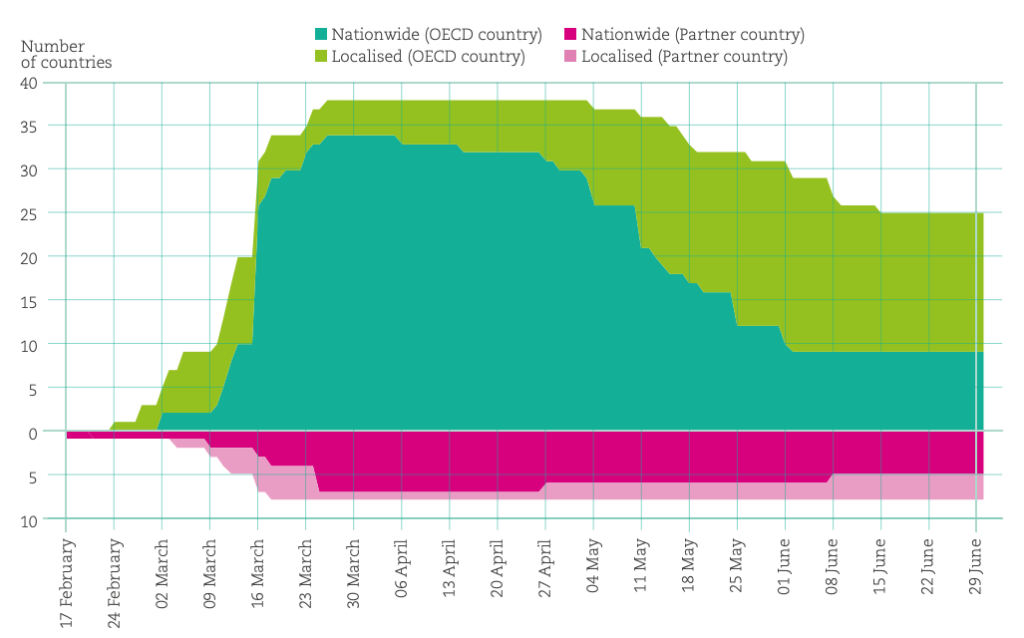Classroom teaching is the most common way of teaching that brings an environment to gather students physically in a classroom. There have been several strategies designed and developed to make such teaching methods more productive. These innovative teaching methods considered visualization, cooperative learning, inquiry-based instruction, differentiation, employing technologies, behavior management, and professional development [1]. Technological tools were mainly used to further attract students to the course, meaning that digital tools were used to complement classroom teaching and enable socialization between students. This technique has been used in many developed countries with good IT infrastructure. However, even frontier countries with strong IT infrastructure designed most of their courses and lectures in classroom-based teaching, which I would call the traditional or conventional method.
The COVID-19 pandemic has forced many countries to enter lockdowns, preventing the physical presence of students in schools and universities. So many university and school teachers were forced to change their teaching methods to online teaching. This shift was not trivial for many as the previous teaching method was designed based on the assumption of the physical presence of students in classrooms. Teachers were not prepared for such online teaching methods, and there were no instructions or guidelines from their educational authorities to conduct such techniques. Moreover, some of the institutions had no pre-selected digital tool for learning. Thus, the pandemic crisis has suddenly created many new challenges for the educational system.
Some countries have announced support measures to equip schools with digital platforms and tools for distance learning, lending digital devices to less well-off students, and training school staff in methodologies and techniques for distance learning [2]. Such investments will prepare educational systems to react better to future crises that could somehow prevent classroom teaching. By the end of March 2020, school closure was implemented in all 46 OECD (Organisation for Economic Co-operation and Development) countries as depicted in Figure 1. Meaning that most of the countries in the world have largely affected by such a pandemic crisis, leading to a change in their teaching style.
 Figure 1. Number of countries with school closures due to COVID-19 [2].
Figure 1. Number of countries with school closures due to COVID-19 [2].
There have been several discussions on how to move from classroom teaching to online teaching, and the new challenges that arise from this rapid shift. I would argue that the initial classroom teaching method had fundamental drawbacks that have lead us to such failure. In the year 2020, with over 30 billion IoT devices, connectivity through 4G and 5G with an extremely high-speed Internet connection (at least in all OECD countries) and the existence of several eLearning tools, digital platforms for teaching and learning, universities and schools were still dependent on conventional methods. I believe that an efficient and productive teaching method in a digital era should not experience any hard transition from the classroom to the fully online method. The learning process should be developed using digital tools so that the transition from classroom teaching to online teaching would be similar to a shift from asynchronous to synchronous or offline to online method.
I think we should learn the lesson from the pandemic time and don’t wait to move back to the pre-COVID time. Such situation can happen in future in different scales, not just through a virus, but due to for example air pollution. Several cities. Poor air quality has forced many countries in the past to close schools and universities. This may happen even more frequently in future, and reducing traffic through closing schools and universities would help such situation. An online teaching method that has been designed along with the classroom teaching could simply solve problems, and thus governors can simply react through such measures without additional cost.
References:
[1] https://www.quizalize.com/blog/2018/02/23/teaching-strategies/ [2] https://www.oecd.org/education/the-impact-of-covid-19-on-education-insights-education-at-a-glance-2020.pdf